Essay on Texting and Driving
Outline of Essay
- Introduction
- The Psychology of Texting and Driving
- Legal and Social Consequences of Texting and Driving
- Solutions To Prevent Texting and Driving
Introduction
Texting and driving refers to the act of composing, sending, reading, or viewing text messages, emails, or other digital content while operating a motor vehicle. This dangerous behavior is a form of distracted driving that takes a driver’s attention away from the road, increasing the risk of accidents, injuries, and fatalities. According to the National Highway Traffic Safety Administration (NHTSA), distracted driving caused 2,841 deaths and an estimated 400,000 injuries in the US in 2018. Of those fatalities, 8% were attributed to texting while driving. Moreover, drivers who text while driving are 23 times more likely to get into a crash than those who don’t.
The Psychology of Texting and Driving
Texting and driving is a dangerous behavior that puts both the driver and other individuals on the road at risk. The psychology of texting and driving involves several factors, including cognitive, emotional, and behavioral aspects.
Cognitively, texting while driving requires the driver to divide their attention between two tasks – driving and texting – which can lead to cognitive overload. This overload can cause the driver to miss important cues on the road and increase their reaction time to potential hazards. Emotionally, the need to stay connected and respond to messages quickly can drive individuals to text while driving.
This behavior can be reinforced by the positive feelings associated with receiving and responding to messages, such as a sense of social connectedness and the anticipation of pleasure from engaging in social interaction. Behaviorally, texting while driving is a habit that can be difficult to break. Habits are often triggered by environmental cues, such as the sound of a notification on a phone, and can be reinforced by the immediate gratification of responding to a message. Breaking the habit of texting while driving requires the individual to consciously change their behavior and develop new habits.
Some individuals may engage in texting while driving as a form of risk-taking behavior or as a way to assert their independence and control. These individuals may perceive the act of texting while driving as a way to demonstrate their ability to multitask or to resist social norms and rules.
The Legal and Social Consequences of Texting and Driving
Texting and driving can have serious legal and social consequences. Here are a few examples:
Many states have laws prohibiting texting and driving. If caught, drivers can be fined, have their driver’s license suspended, or even face criminal charges. If a texting and driving accident results in injury or death, the driver may face charges of reckless driving, vehicular homicide, or manslaughter. Texting and driving are viewed as extremely dangerous and irresponsible behavior. If someone is known to text and drive, they may be seen as a reckless driver and face social consequences such as a damaged reputation lost friends, or being shunned by society.
If someone is injured or killed as a result of the driver’s texting and driving, the driver may face social consequences such as guilt, shame, and public outrage. texting and driving is not only dangerous, but it can also have severe legal and social consequences. It is important for drivers to understand the risks and to avoid texting while behind the wheel.
Solutions to Prevent Texting and Driving
Texting while driving is one of the most dangerous behaviors on the road today. It can lead to accidents, injuries, and even fatalities. Fortunately, several solutions can help prevent texting and driving.
One of the most effective solutions is education. Drivers need to be made aware of the risks of texting while driving and the consequences that can result. This can be done through public awareness campaigns, driver education courses, and even legislation that requires drivers to complete a distracted driving course before obtaining a driver’s license. Another solution is technology.
There are many apps and devices available that can help prevent texting while driving. Some of these apps can block incoming texts and calls while the driver is behind the wheel, while others use GPS technology to detect when the driver is in a moving vehicle and automatically disable certain features of the phone.
Enforcement is also an important solution to prevent texting and driving. Police officers can use various methods to catch drivers who are texting behind the wheel, such as staking out popular texting spots or conducting traffic stops. Fines and penalties for texting while driving can also act as a deterrent for some drivers. Personal responsibility is key. Drivers need to take responsibility for their actions and make a conscious effort to avoid texting while driving. This can be done by turning off the phone while driving, putting it on silent, or handing it to a passenger who can handle the phone calls and texts.
Passengers can take on the responsibility of texting the driver. This can help to eliminate the temptation to text while driving. If a driver needs to text, they should pull over to a safe location and park before sending or reading a message.
FAQ’s
What are 5 facts about texting and driving?
Texting while driving is 6 times as deadly as driving while drunk. 25% of car accidents are the result of cell phone usage. 11. While 94% of teen drivers acknowledge the dangers of texting and driving, only 35% of those polled admitted to texting and driving.
When did texting become popular?
Text messaging started in 1999 when users started texting across different carrier networks. By the year 2000 text messaging became popular. Message volumes were averaging around 35 texts per person per month in the U.S.
What is the purpose of texting?
The purpose of texting is to send quick personal, family, social, and business messages. People often prefer text messaging because message recipients aren’t required to respond immediately. Texts also allow businesses and organizations to get people’s attention and send time-sensitive messages.17-Oct-2022.
Download the Pdf of the Essay on Texting and Driving
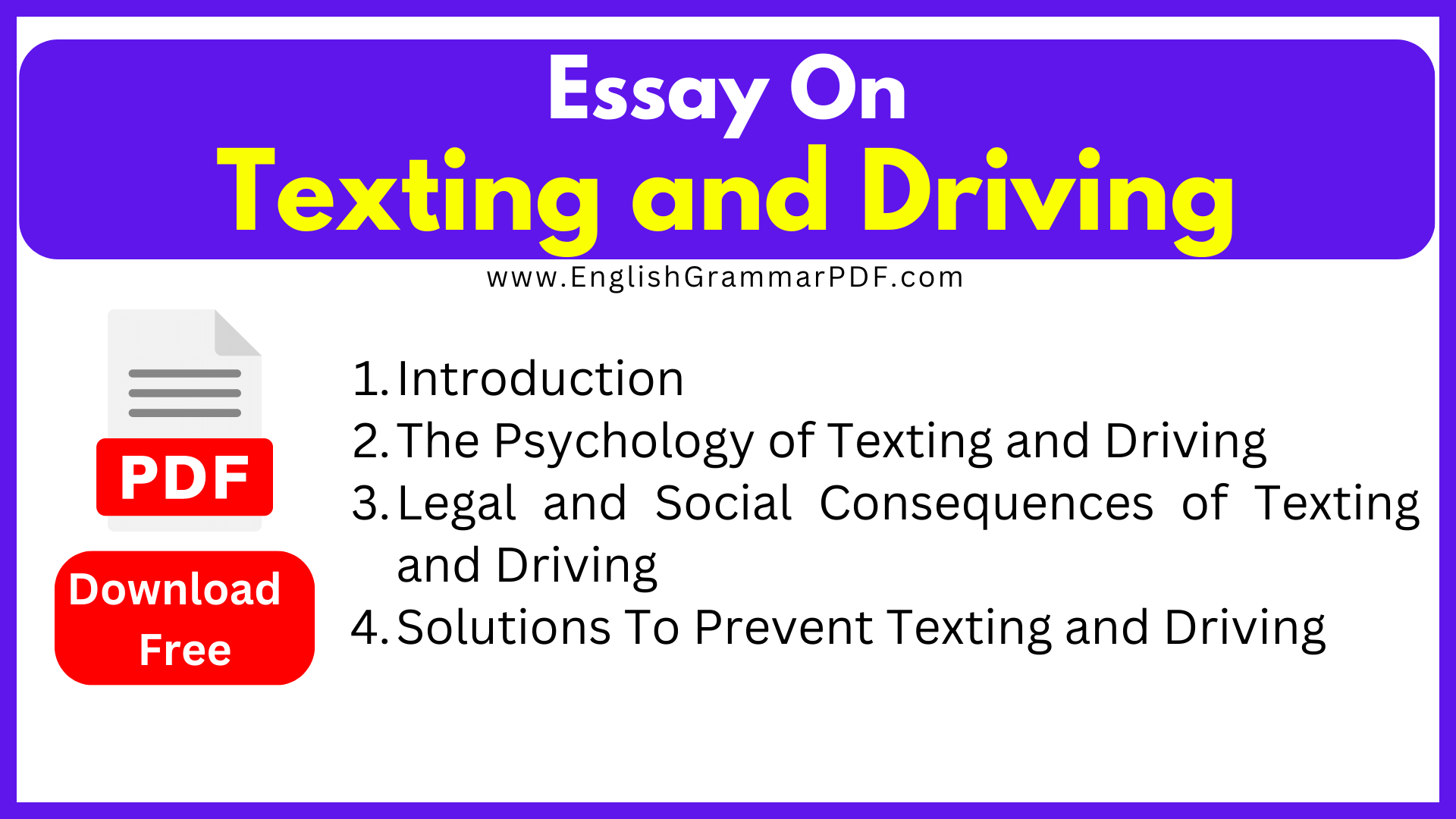
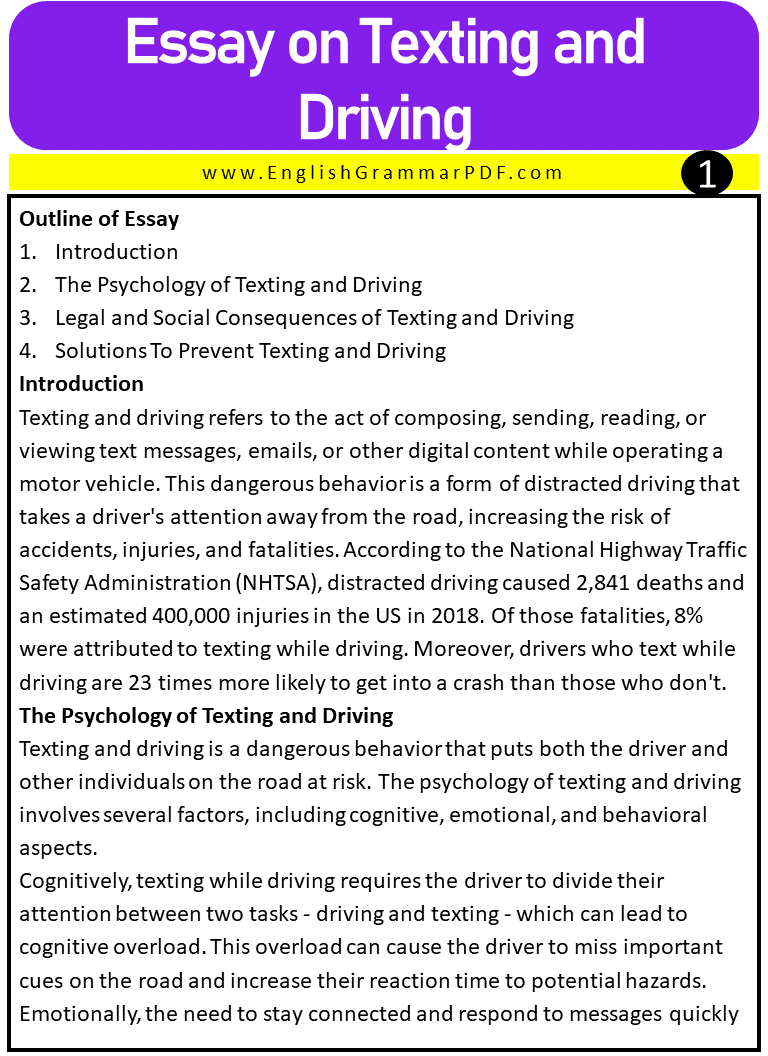
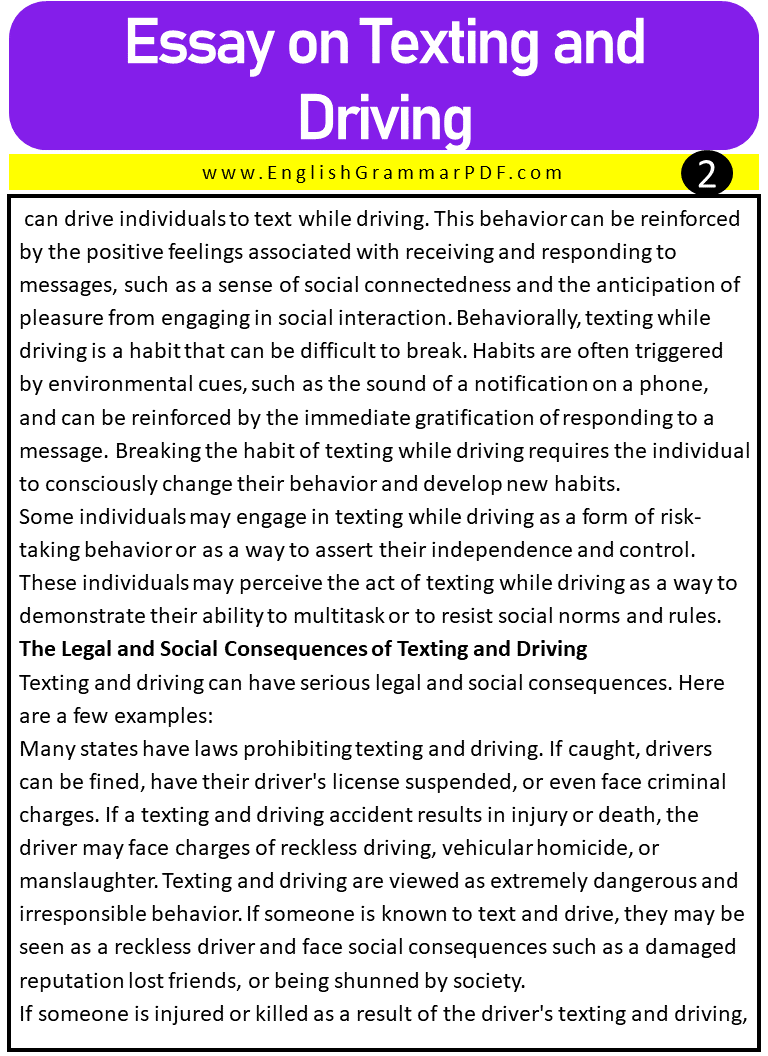
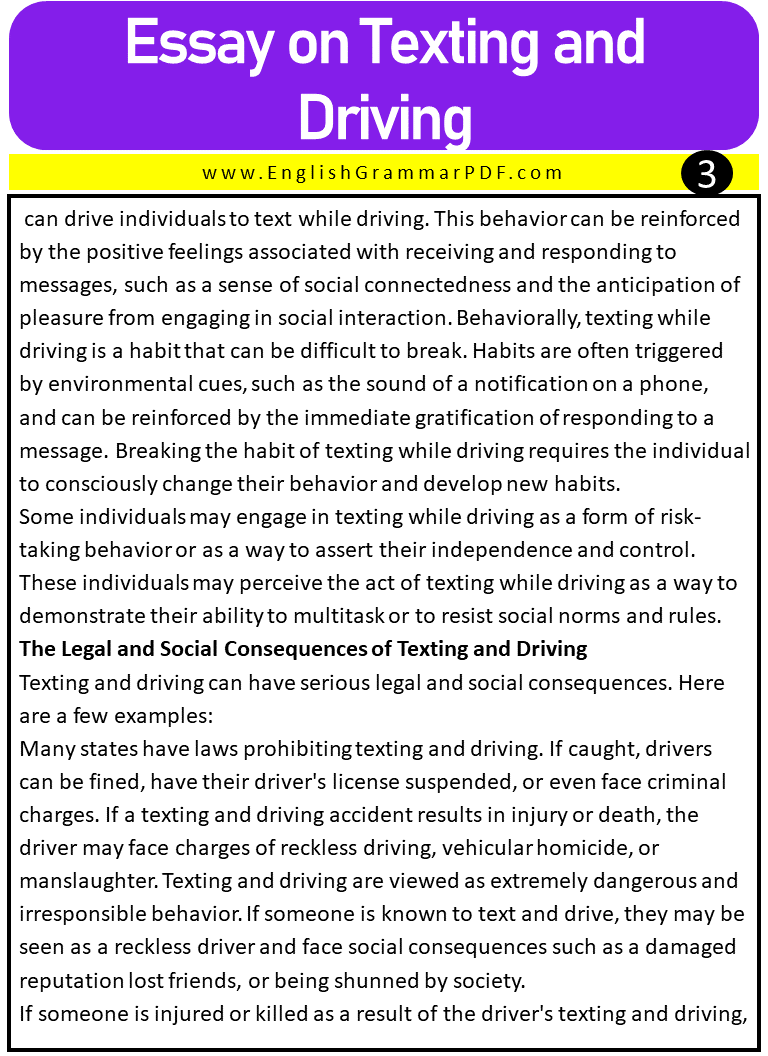

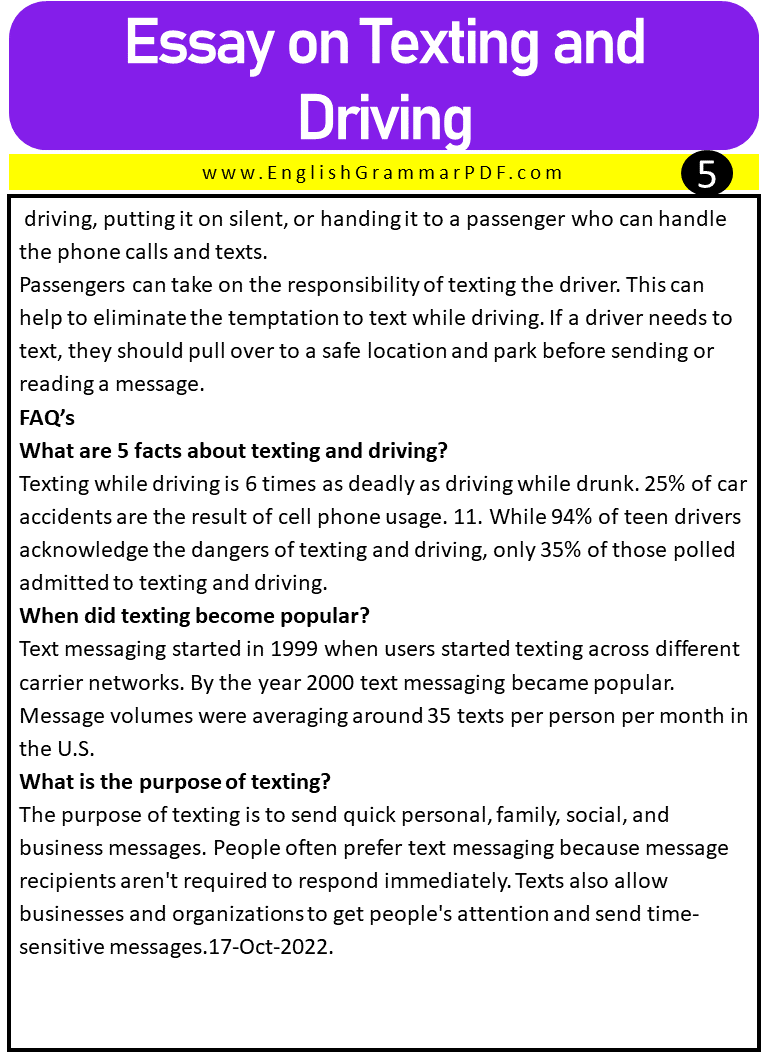
More Essays:


